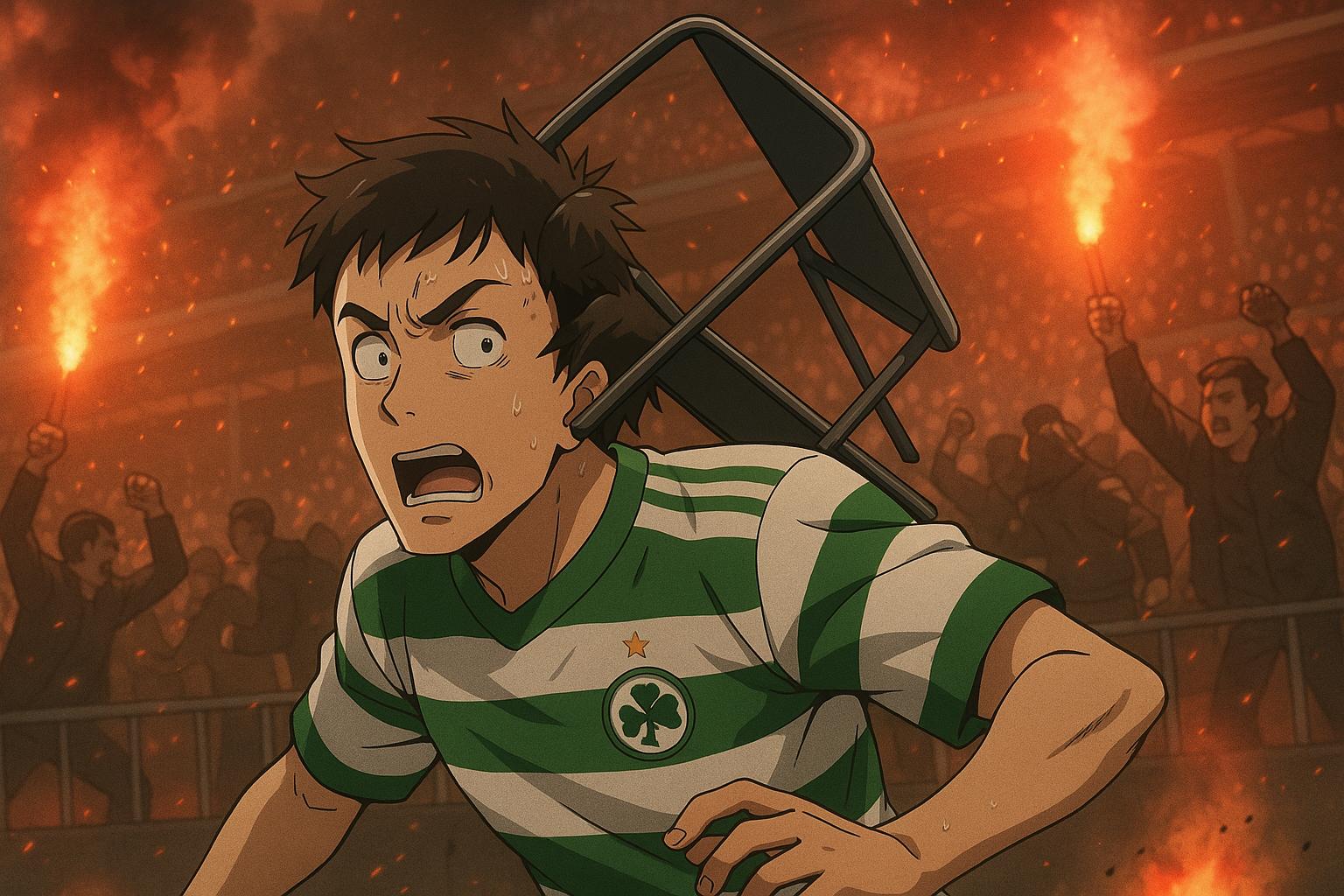In recent weeks, the increasing disorder within Scottish football has reached alarming levels, underscored by a series of harrowing incidents, most notably the injury sustained by Aberdeen defender Jack MacKenzie during a match at Tannadice. MacKenzie was struck by a chair thrown by one of his own club's supporters, a stark reminder of the persistent violence and disorder that has seeped into the sport. This incident follows a distressing trend characterised by violent clashes and the use of dangerous pyrotechnics, suggesting a crisis that warrants immediate action from football authorities.
The atmosphere around Scottish football matches has been marred by episodes of crowd violence, with recent weeks highlighting a worrying increase in such disruptions. Not long before MacKenzie’s injury, Partick Thistle reported that several young fans were injured due to a pyrotechnic display during a play-off match against Ayr United. Similarly, during an earlier Scottish Cup semi-final against Celtic, a St Johnstone supporter suffered a medical emergency linked to the chaos surrounding a pyro incident at Hampden. These incidents reveal a troubling trend where fans are subjected to unsafe conditions, prompting calls for urgent reform from many stakeholders involved in the sport.
Celtic fans, celebrating their recent league victory, displayed their disregard for public safety as they gathered in large numbers in the city centre, prompting chaos that resulted in business closures. Videos circulating on social media depicted sectarian chanting and anti-social behaviour that overshadowed the celebration. The rising levels of disorder have led many, including the Scottish Football Supporters’ Association, to voice serious concerns regarding fan safety, suggesting we are teetering on the brink of a catastrophic incident. Alastair Blair, the Association's Director of Operations, articulated the gravity of the situation, stating, “Nobody should ever go to a football match and not make it home.”
The analysis of the current state of fan culture reveals more alarming trends. In particular, the increasing use of cocaine among matchgoers has emerged as a significant factor contributing to the rise in violence. With reports indicating that 30% of fans have witnessed drug use at matches, it’s essential to recognize the interplay between substance abuse and fan behaviour. Geoffrey Pearson, a scholar in criminal law, noted that for some attendees, the match is merely one aspect of a broader social event defined by heavy substance use and a search for a transgressive experience.
As concerns grow regarding the potential for fatalities tied to these behaviours, football authorities in Scotland are increasingly urged to adopt a model of strict liability, which would hold clubs accountable for the actions of their fans. This is seen as a necessary step to mitigate risks and safeguard the integrity of the sport. Calls for action are mirrored by observations that diminished policing at matches has created an environment ripe for disorder. The Scottish Police Federation has stressed time and again that relying solely on stewards is insufficient in deterring troublemakers.
Moreover, the broader socio-economic context cannot be overlooked. With the cost of living crisis biting deep, some experts fear this may lead to an uptick in hooliganism as frustrations among fans manifest in violent behaviour. Former First Minister Henry McLeish highlights the potential for economic pressures to spill over into football-related violence, stressing that economic discontent could drive individuals to seek release through anti-social activities.
The compounding issues of drug use, inadequate security measures, and escalating violence suggest a systemic problem that requires comprehensive solutions. The time for dismissive attitudes from authorities is long past; immediate and robust action is essential to safeguard fans and players alike. Acknowledging the reality that most supporters wish to enjoy the game without fear, a united front is crucial. This means engaging in honest conversations about fan culture, adopting strict liability, and enforcing regulations to eliminate pyrotechnics and violence from the sport.
As Scottish football confronts these challenges, the ultimate goal must be to restore safety and enjoyment to matches. Ensuring that everyone who attends a game can do so without the fear of violence or intimidation is non-negotiable. The stark warning from supporters’ groups that a fatal incident could soon occur should serve as a desperate call to action, compelling authorities to rethink their approach to maintaining order within the beautiful game.
Reference Map
1: Paragraphs 1, 3, 5, 6, 7, 8
2: Paragraph 2
3: Paragraph 4
4: Paragraph 5
5: Paragraph 6
6: Paragraph 6
7: Paragraph 7
Source: Noah Wire Services
